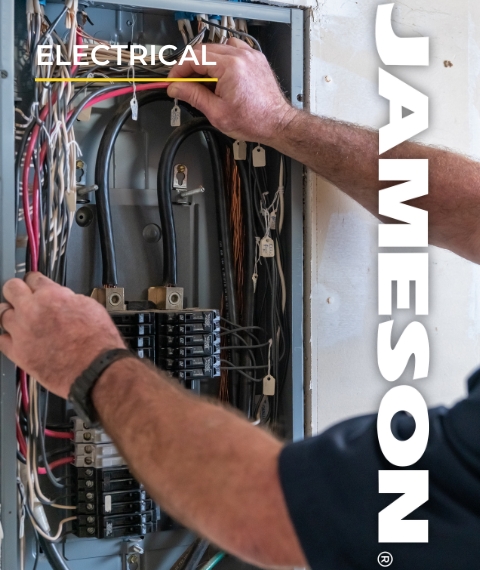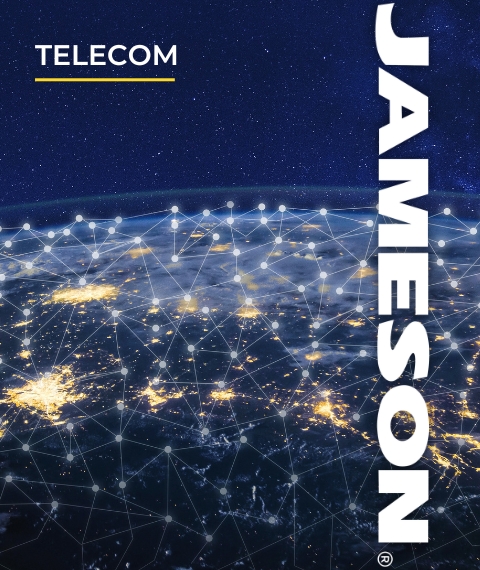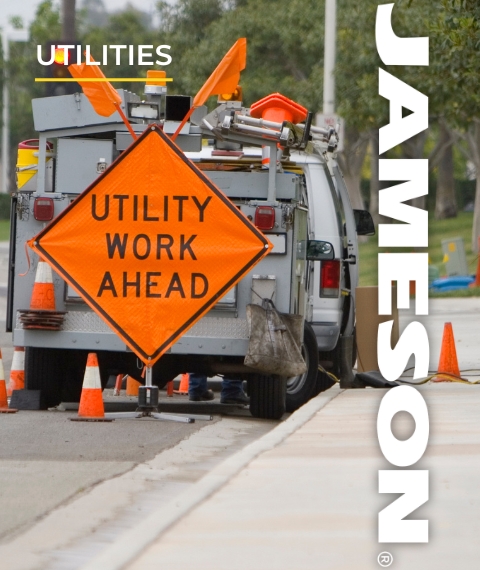
CIVIL WAR (1861-1865)
The first use of electricity by the United States during a time of war wasn’t through transmission lines, but rather the lines used for electrical telegraph. When the war started in April 1861, the Union already saw the importance of telegraph communication. It allowed President Abraham Lincoln and his administration to receive messages about the war and send responses quicker than messengers.
The military formed the U.S. Military Telegraph Corps to handle the task of establishing telegraph lines to the battlefields. The members of the corps were not soldiers, but civilians who placed themselves in great danger to help with the war effort. Those who went out to set up the lines of communication had one of the most dangerous jobs in the nation. Corps linemen were under constant threat of capture,
injury, or death at the hands of the Confederate Army. Linemen and operators had a death 1 in 10 during the Civil War, which was about the same rate for soldiers.
During the course of the civil war and for about one year after, the USMTC laid a total of 15,400 miles of telegraph cable. 8,000 miles of that was for military use and a lot of it was laid in the middle of battles. Because the corps members weren’t military, their families received no benefits after death. No core member was eligible for a pension, and they didn’t receive any recognition for their service and bravery until 32 years after the war ended.

WORLD WAR I (1914-1918)
If there’s one thing war is known for, it’s advancements in technology. Each conflict seems to bring new technology to advance the art of warfare. When WWI broke out in 1914, much of the world had spent almost 30 years adding electricity to their nations, their cities, and their war, so the advancements came.
The War to End All Wars began a mechanization of the military that still goes on a century later. The militaries of the world began to use electricity on everything they deployed – ships, planes, vehicles, tanks and more. On ships, lights could be used to communicate with allied ships or used to spot enemy ships in the darkness.
As troops on both sides of the war dug in, communication lines were run along trenches to allow commanders to plan and give coordinates for attacks. Since bunkers in the trenches weren’t friendly to gas lights, electrical wires were added to provide lighting for commanders and their war plans. It also was a boost to how lethal war was.
“Electricity is going to be key when it comes to modern warfare, especially in the world of artillery,” said Kevin Hymel, a military historian in Arlington, Va., with more than 30 years of experience. “You’re going to have observers calling back to artillery stations on telephones giving coordinates of an enemy position. The faster you could communicate that to artillery, the faster they’re going to get weapons on the enemy.”
Lines were also laid across battlefields, which left them exposed during a battle or subject to sabotage. The phone lines became less popular in the later stages of the war as radios began to take over as the preferred method of communication.
Outside of the front lines, lighting played a big role in helping fight enemy attacks. Spotlights were used for a dual purpose when the Germans attacked British cities from the air.
“The only defense the British really have are lights trying to blind the zeppelin pilots,” Hymel explained. “They did later develop anti-aircraft guns. They also used those lights to guide fighter pilots to the zeppelins.”
The most unusual, and probably unnecessary, use for electricity in WWI? Some countries began to electrify barbed wire. While it wasn’t widespread, it was out there.
WORLD WAR II (1939-1945)
Another global conflict and even more advancements in technology. The use of electronics, such as radar and sonar, skyrocketed during WWII and it all relied on electricity to function.
“In the Battle of Britain, the Germans are using directional beams that cross over a target,” Hymel said. “A German bomber simply follows this invisible beam to target, and when the wave switches, they know to drop the bombs.”
The British later learned how to block the beam and misdirect the planes.
Most of the wired systems would be laid down after troops had been through an area and command moved in. The systems were much more complicated than ones before. Hymel talked about how many of the towns in France would have a crucifix in the center, and those would be used to hold wires as they went to various parts of the town. General George S. Patton saw this and commented that it was further proof that God was on the side of the Allies.
Electricity and lights were used extensively in all manner of vehicles. Low-level lights were installed in tanks and bombers to help them see what they needed in their machines. The U.S. fleet of submarines all ran on electricity, requiring them to resurface and charge their batteries. If it was a machine used during the war, odds were good that it used electricity and/or lights in some way. Spotlights were also still used in areas to light up aircraft for anti-aircraft guns, but many cities were forced into blackouts to hamper bombing efforts.
Lights were also heroes during the war. Hymel told the story of the Battle of the Philippine Sea, or the Great Marianas Turkey Shoot, between the Americans and Japanese, where the Americans had a decisive air victory. The American counterattack against the Japanese finished after the sun went down and many of the planes were running low on fuel. Despite the risk of being spotted by Japanese submarines and aircraft flying at night, Vice Admiral Marc A. Mitscher ordered drastic measures to save as many Americans as he could – he lit up the ships and spotlights.
“They turn on all the lights, and sure enough, most of the planes are able to land,” Hymel said. “That’s one of the great lighting stories of World War II.”
Some planes landed on different carriers than they were assigned, and some of them were forced to land in the water for rescue later. Of those that didn’t make it to the ship, a majority were rescued.
KOREAN AND VIETNAM WARS
The Korean War started off with WWII equipment being used, so not much advancement was made in that conflict. In fact, things regressed.
“As the war settles down in 1951, it returns to trench warfare, where you have fighting in the trenches much like you have in WWI,” Hymel said. “Korea, in a way, is a step back from what you see in WWII.”
Vietnam was another transition in the way wars were fought, with the increased use of helicopters in coordination with ground attacks. Electricity was widely used not just to light up bases in Vietnam, but also to help provide communication directly to the Pentagon.
“Although they have lighting restrictions, when you have bunkers under sandbags, you can illuminate those,” Hymel explained. “But you tended to keep it dark because you didn’t want to give the VC a target.”
THE PERSIAN GULF WAR
This conflict also saw the use of GPS to help soldiers find their way around the desert and improve the accuracy of bombing.
There was an increase in fighting and night movement during this war. All the machines in use would have low red lights inside that assisted the soldiers with their tasks but also helped them stay attuned to the night without the use of bright lights.
One area where electricity was put to heavy use was at the bases, where electronic maps were being used to plan out attacks and movement.
THE WAR ON TERROR
For lack of a better name, this covers all the conflicts the United States has engaged in since the Sept. 11 attacks. Many of the items used for these battles feature great advancements in technology..
The needs of power are still there, though. Electricity is needed to supply power to all of this technology, even if it’s just to power the batteries needed to make it work.
Throughout all of the modern conflicts in history, lights were a great benefit to the military, Electricity has always been of value. It was used to power all of the devices that made war more efficient and more deadly in some cases. To give you an idea of how important electricity is to war, the United States since World War II has studied how important it is to cripple the electrical systems of the enemy in the quest for victory.
Despite having a corps that handled telegraph wire during the Civil War, the branches of the military has moved away from units that focused just on those tasks. Specialized training is still given to soldiers, but they are placed within another unit to handle setting up any needed communications, electricity, or lighting.




